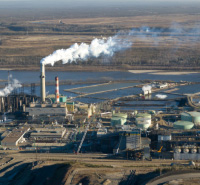It is a pain in the behind to cut blow holes in walls to blow in insulation. It is also tricky to work around windows and other internal factors like headers and footers,but if you are not tearing out the interior walls and are environmentally concerned, I still think it is the best bet. Here is a great article about it.
http://www.aboutsavingheat.com/cellulose.html
Fill your Walls & Ceilings, Not our Landfills!
We use blown-in cellulose for most of our insulation jobs, (except for crawl spaces, where moisture and the lack of hollow walls won’t allow it.) Blown cellulose is less expensive, safer to you as well as the environment and more effective and energy efficient than its leading competitor – fiberglass.
Cellulose fills walls and ceilings and stops air infiltration better!
The fibers of cellulose insulation are much finer than fiberglass. When cellulose is blown or dense-packed into your walls and ceilings, it takes on almost liquid-like properties that let it flow into cavities and around obstructions to completely fill walls and seal every crack and seam. No fiberglass or rock wool material duplicates this action. Liquid-applied foam plastics do, but they cost much more than cellulose.
In new construction cellulose insulation can be installed in walls using a spray process or several different dense-pack dry techniques that are also effective at sealing homes against air infiltration.
Cellulose is a naturally recycled product…
Cellulose insulation is made from recycled wood fiber, primarily newspaper. One hundred pounds of cellulose insulation contains 80 to 85 pounds of recycled newsprint. The remainder is made up of Borax and Boric acid, both non-toxic fire retardants.
Today more and more communities are addressing the challenge of waste disposal through “curbside recycling” and similar conservation programs. These efforts work only if there is demand for recycled products.
The federal government is attempting to create demand through such measures as the Environmental Protection Agency’s comprehensive procurement guideline for products containing recovered materials. Cellulose unquestionably meets all requirements for insulation specified by the guideline.
When you choose cellulose insulation you help solve the waste disposal problem and help fight air pollution. This may help your community hold down taxes or refuse disposal charges. It certainly contributes to a cleaner environment.
Paper that is not recycled ends up in landfills, where it may contribute to environmental pollution, or at incinerators where energy is wasted reducing it to ashes, soot, and smoke.
…And a responsible use of resources
Even if waste paper did not create a disposal problem, most people believe we have an obligation to make maximum use of the resources we consume.
Cellulose insulation does not “save trees,” but it makes maximum use of the trees we have already harvested.
:}
I am no hmtl warrior and their fonts to not transfer well, so go there and read. More tomorrow.
:}





